Honeywell Aerospace CEO Inspires Embry-Riddle Grads to 'Lead Boldly'
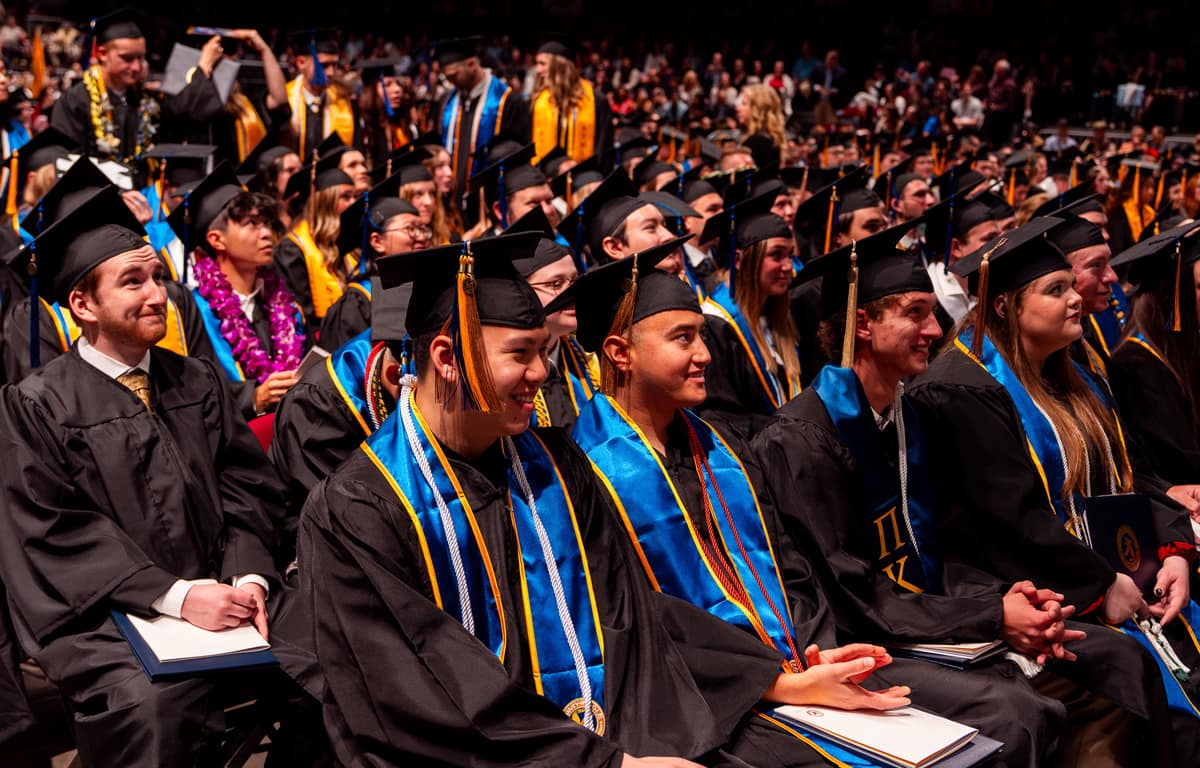
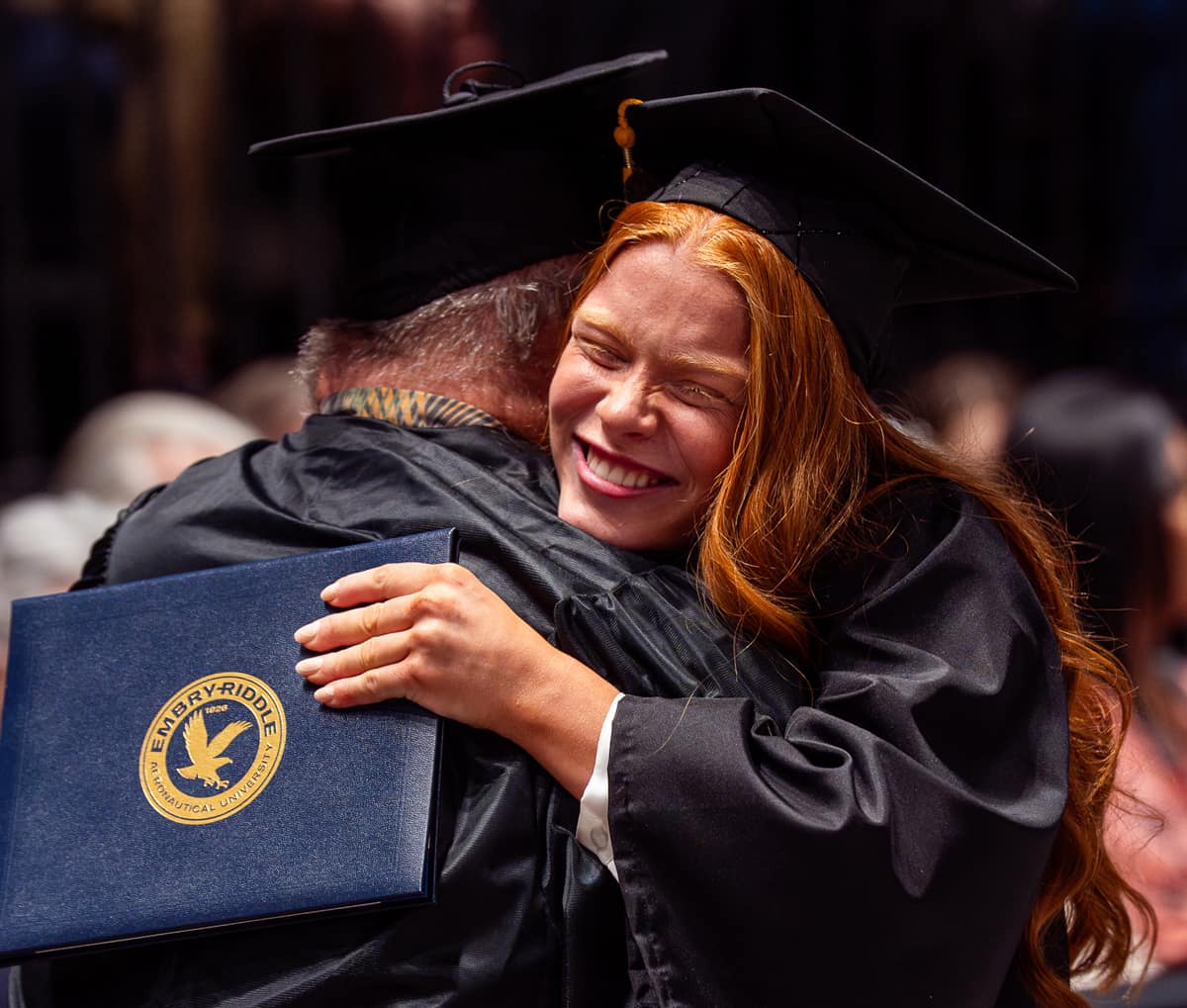
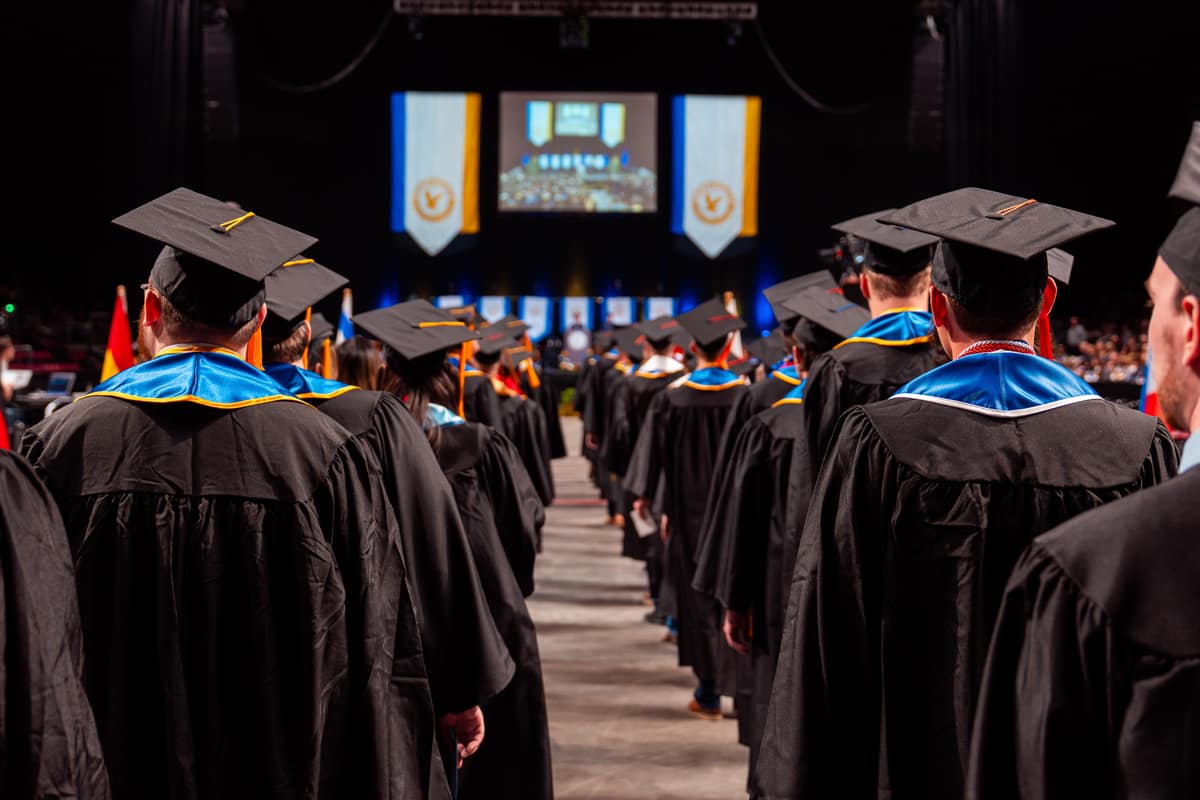

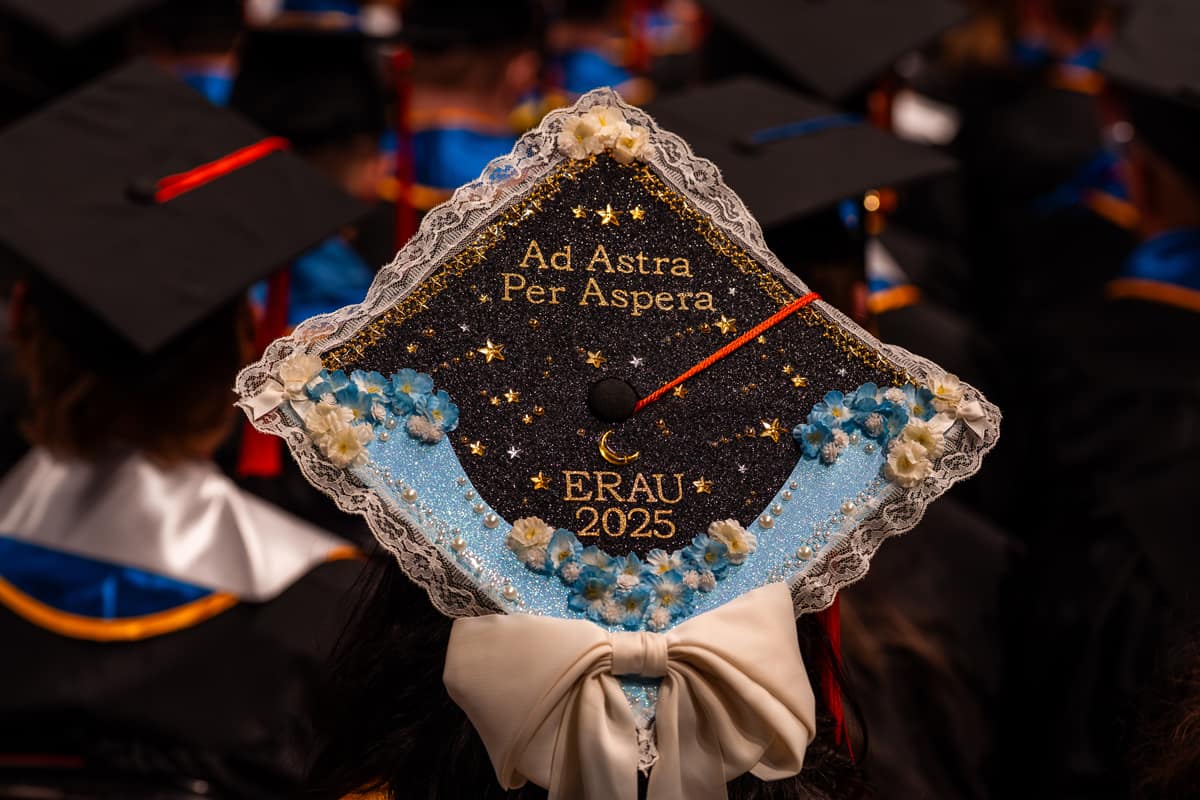
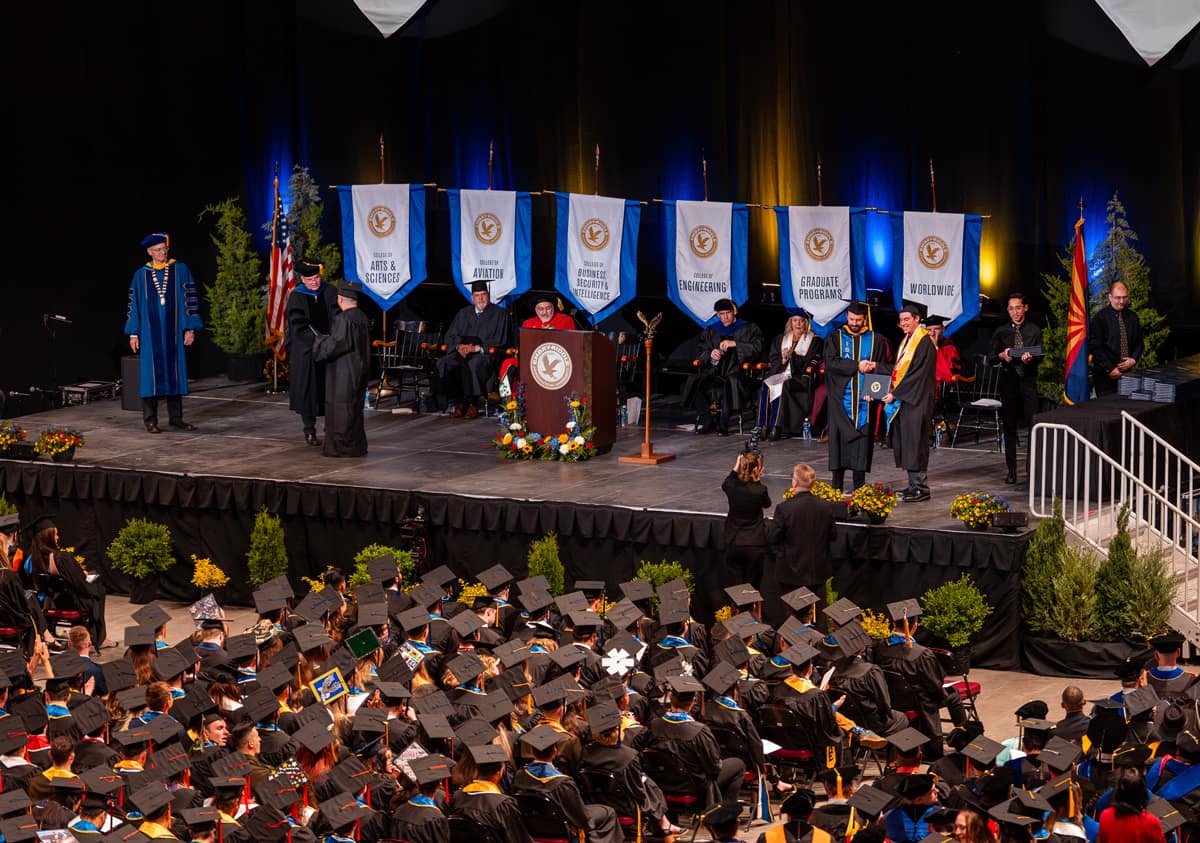
At the commencement ceremony for Embry-Riddle Aeronautical University’s Prescott, Arizona, campus, Jim Currier, the president and CEO of Honeywell Aerospace Technologies, described the university as a “crucible of precision and passion.”
Embry-Riddle “is a launchpad where theory meets practice, where your hopes and dreams of flight and exploration are matched with the discipline to bring them to life,” Currier told graduates and their families at the May 3 ceremony held in Prescott Valley’s Findlay Toyota Center.
The ceremony honored 476 graduating students, including eight students who received master’s degrees. Twelve students from the Worldwide Campus participated in the ceremony, including five who earned master’s degrees. Twenty-seven graduating ROTC students were commissioned as officers: 21 Air Force cadets and 6 Army cadets.
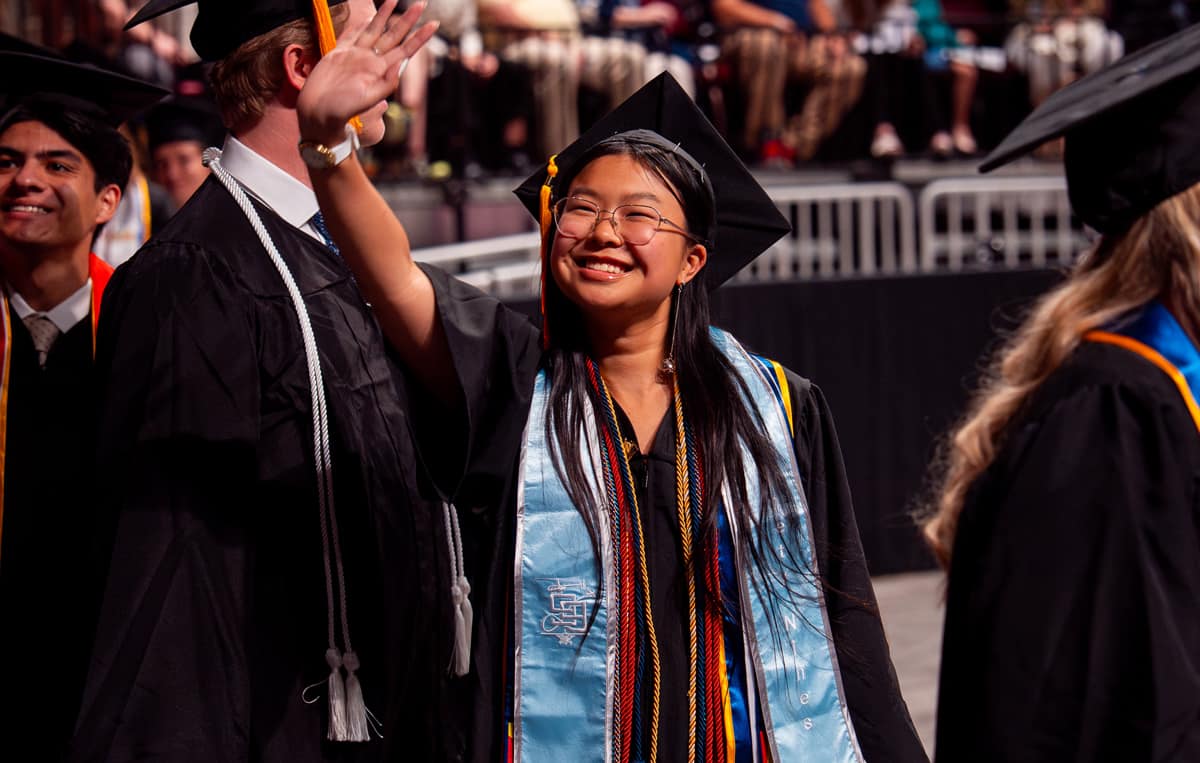
A total of 476 Embry-Riddle graduates were honored at a May 3 commencement ceremony for the Prescott, Arizona, campus. (Photos: Embry-Riddle/Wilson Van Ness)
Currier: ‘You Will Outthink Them, Outbuild Them, Outfly Them’
In his keynote address, Currier reflected on the university’s history — from its founding to its revival as the Embry-Riddle School of Aviation in Miami and its later expansion west, with the opening of the Prescott Campus in 1978.
He connected that history to his own. The son of Cuban immigrants and raised in Miami, Currier earned a Bachelor of Science in Mechanical Engineering from the University of Miami and is now head of Honeywell Aerospace Technologies, headquartered in Phoenix.
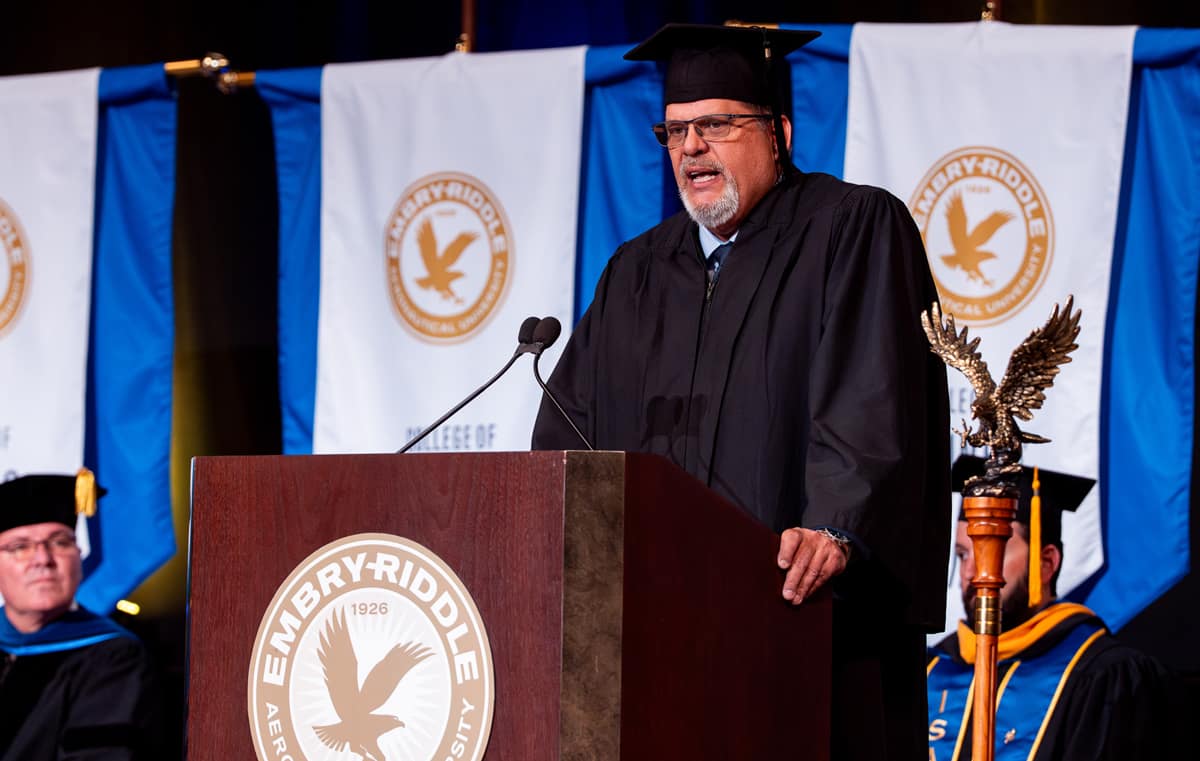
Jim Currier, president and CEO of Honeywell Technologies, served as the ceremony’s keynote speaker. (Photo: Embry-Riddle/Wilson Van Ness)
An International Space Hall of Fame inductee for his role in pioneering reusable rocket technology, Currier told the graduates that he was drawn to engineering by the same passion that brought many of them to Embry-Riddle: “the drive to push boundaries, build what’s next, and to be part of something greater than yourself.”
He described how Honeywell Aerospace works every day on “technology that pushes the edge of the possible,” from avionics and propulsion systems to spaceborne sensors and next-gen autonomy.
“What I can tell you from experience is that all of the innovation in the world comes down to people — people like you,” he said.
Currier told the students that they are entering an area of rapid transformation, naming hypersonics, space tourism, quantum-secure communications, and AI-driven flight systems. The challenges, he said, “are real,” including geopolitical uncertainty, climate change and contested airspace.
“But I am not discouraged,” he said, “And in fact, I am deeply hopeful. Because I know you are coming. I know this graduating class, forged in classrooms, simulators, labs, and hangars, will not only face those challenges — you will outthink them, you will outbuild them, and you will outfly them.”
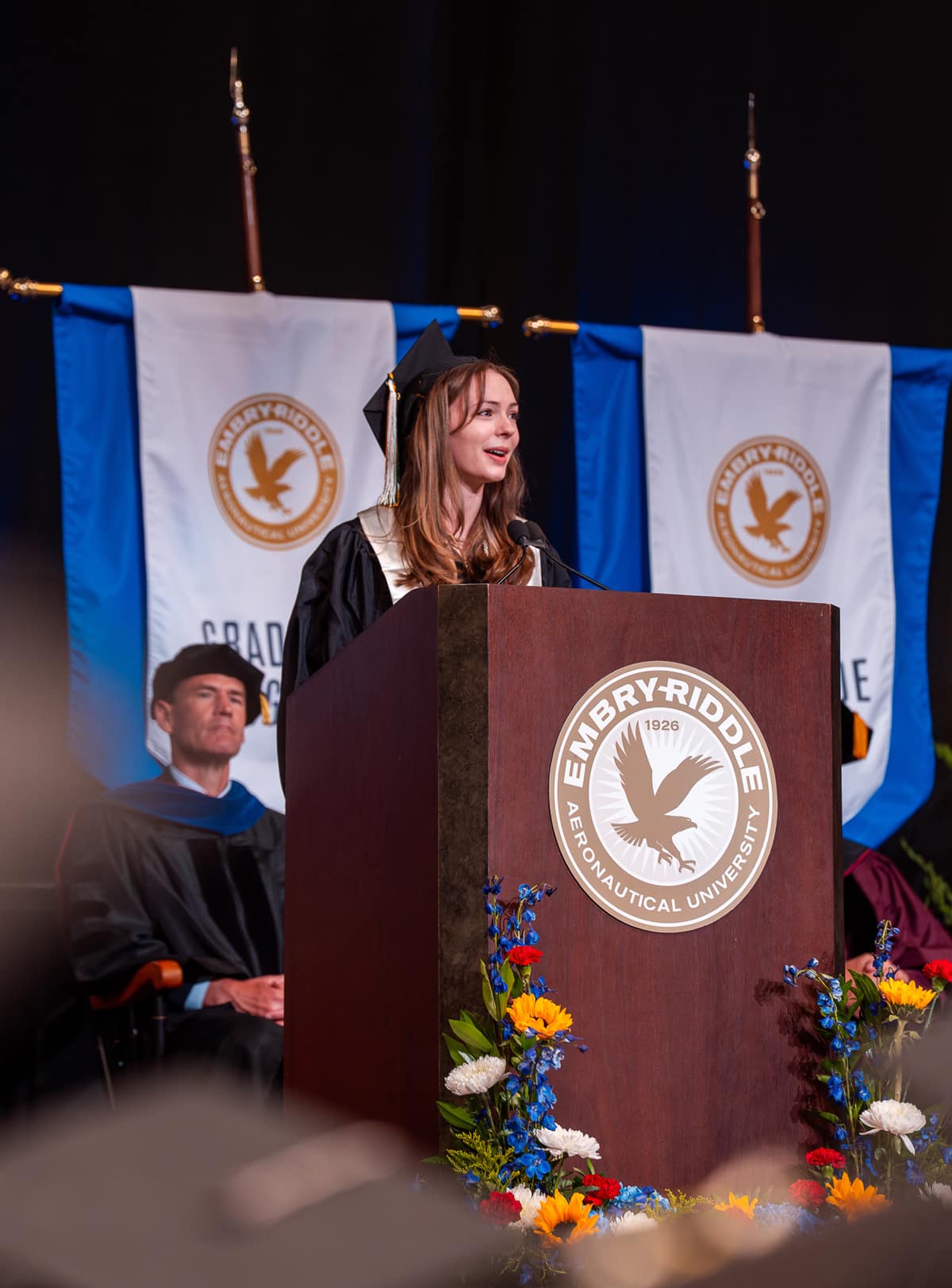
Hailey Murray, who was the featured student speaker, earned a bachelor’s degree in Space Physics and won the Chancellor’s Award. (Photo: Embry-Riddle/Wilson Van Ness)
He encouraged the students to keep their “compass true,” “lead boldly” and “to never forget to look up.”
Chancellor Witcher: ‘This Is Just the Beginning’
Dr. Ken Witcher, chancellor of the Prescott Campus, opened the ceremony, telling the graduates that he was deeply impressed by their accomplishments. “I know that this is just the beginning,” he said.
The ceremony’s featured student speaker was Chancellor’s Award winner Hailey Murray, who earned her Bachelor of Science in Space Physics and is now going on to pursue her doctorate at Cornell University in New York. An Arizona native, Murray told her fellow Eagles that her greatest growth as a researcher and as a person during her past four years at Embry-Riddle came from “being in a state of uncertainty or unfamiliarity.”
“With this in mind,” she said, “I encourage all of you to seek out opportunities, despite uncertainty, with the confidence you have gained as a result of working for this degree.”
New Graduates Express Readiness
Brock McHood, an Aeronautical Science graduate who is applying to be a Prescott Campus flight instructor, compared the journey of being an Embry-Riddle student to that of a pilot.
Alumna Lt. Gen. DeAnna Burt (‘91), the Space Force’s deputy chief for operations, cyber and nuclear, gave the keynote address at the Air Force ROTC Detachment 028 commissioning ceremony at the Prescott Campus. She also swore in 22 new second lieutenants.
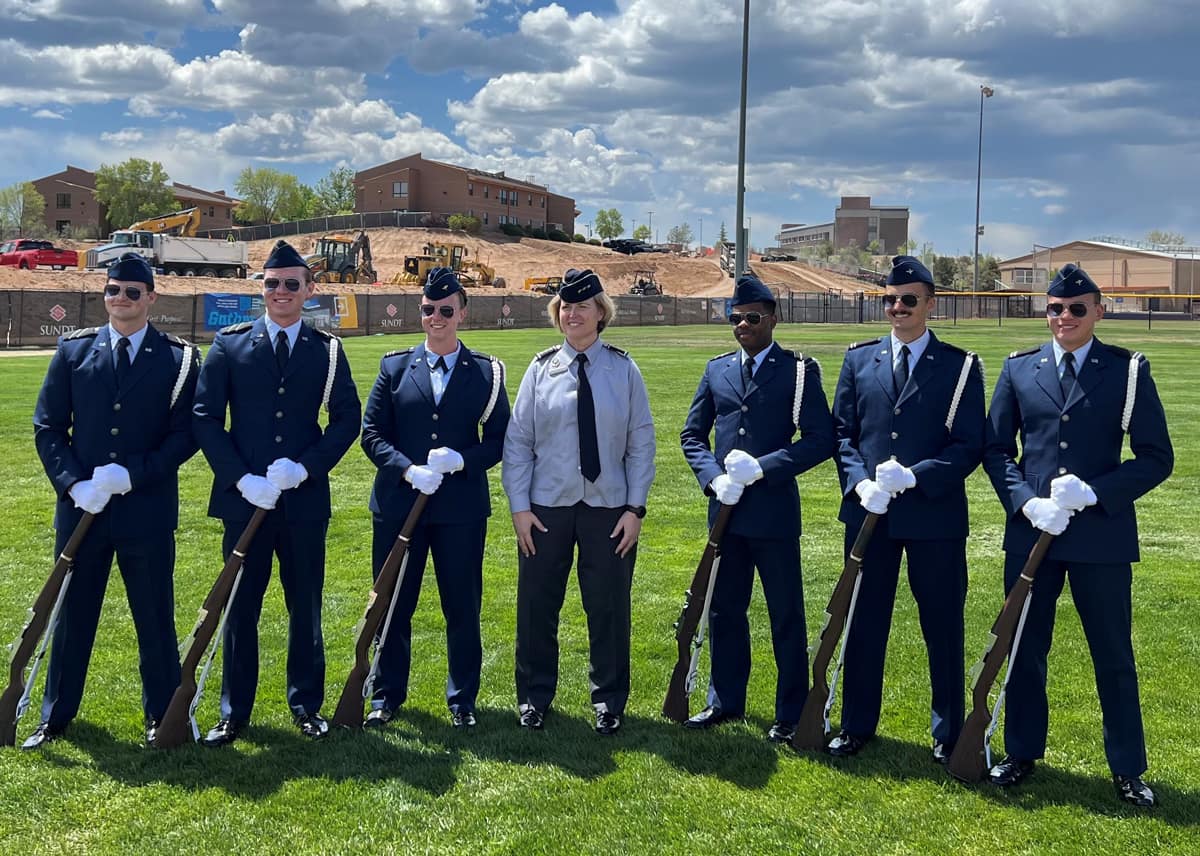
“There will be shining moments and stormy weather,” he said. “How you endure the more difficult moments can make the difference in how you grow as a professional aviator.”
Nicholas Kopacek, an Aerospace Engineering graduate on the Astronautics track, said he was most proud of the two years he spent as a co-leader of an electronic propulsion team on the Prescott Campus. He said the team designed and optimized “an ion thruster to simulate what NASA does with ion propulsion,” a method of spacecraft propulsion that uses electrical energy to accelerate ionized gas.
Kopacek, who has a job lined up with Raytheon Technologies in Tucson, said he was deeply grateful to Dr. Darrell Smith, a professor in the Physics and Astronomy Department, for mentoring him and the team.
“My journey, while difficult at times, has provided me with the skills and knowledge needed to excel in industry,” he said. “My professors have been very supportive, helping me get to where I am.”
— Keaton Ziem contributed to this report.
